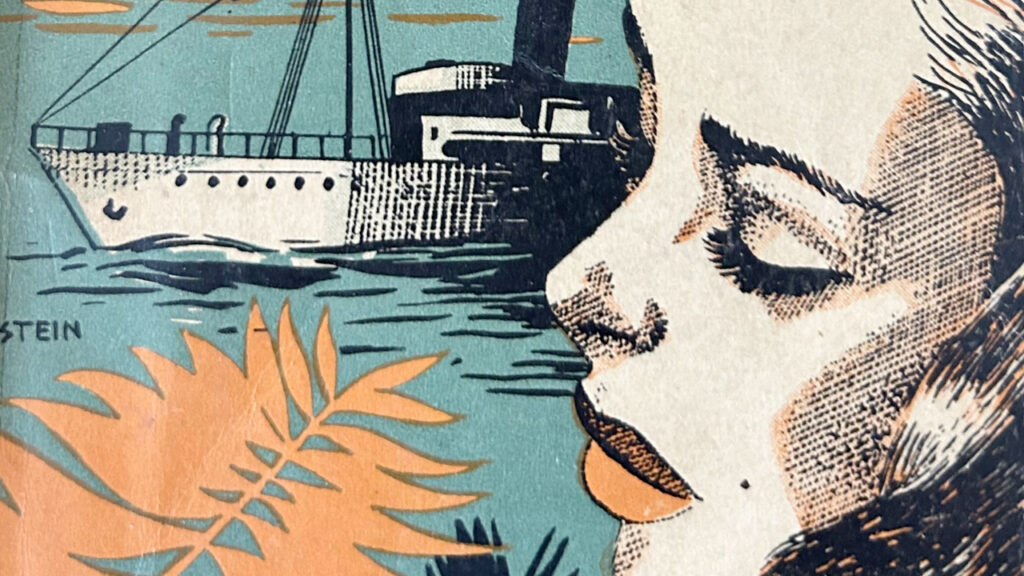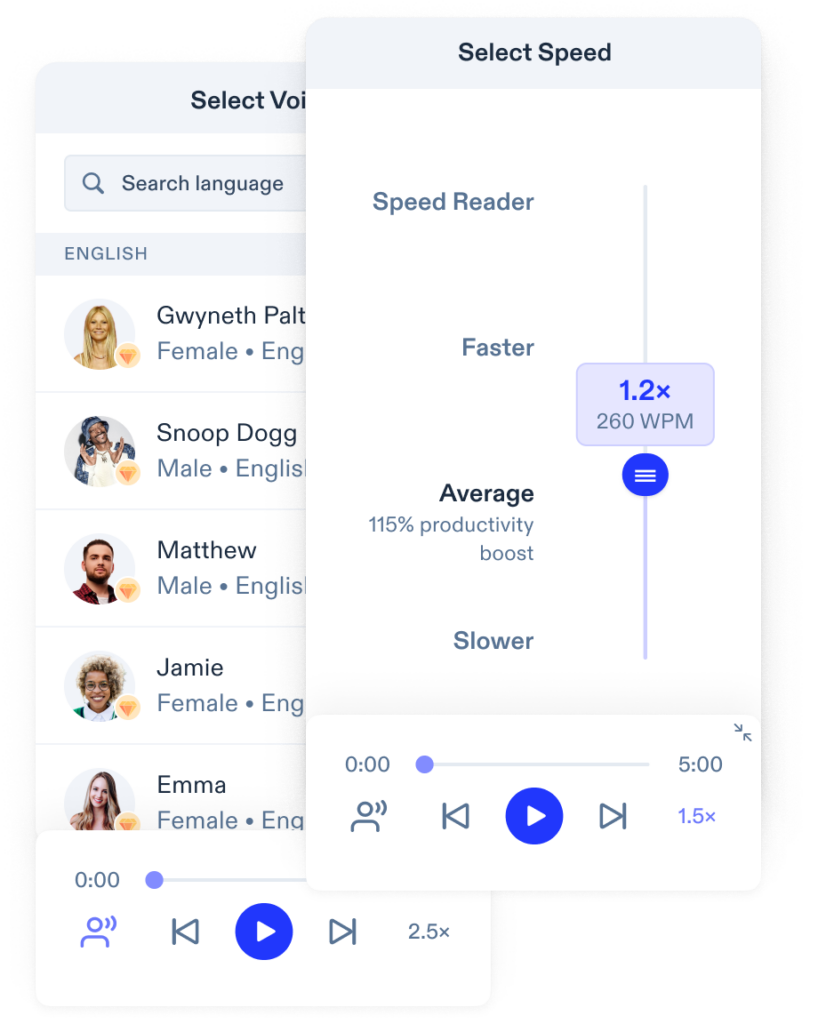
Audiobooks have become an increasingly popular medium for consuming literature, offering a unique and convenient way to enjoy books on the go. If you’re an aspiring author or content creator, venturing into audiobook production can open up new avenues for your work. Fortunately, creating your own audiobook doesn’t have to break the bank. In this comprehensive guide, we’ll explore how to make an audiobook for free, with a focus on user-friendly tools and resources. Plus, we’ll introduce you to Speechify Audiobooks, a powerful and innovative solution for creating audiobooks effortlessly.
Why Audiobooks?
Before we dive into the process of creating audiobooks, let’s understand why they are such a valuable addition to your content repertoire. Audiobooks provide an accessible format for a diverse audience, allowing people to engage with your work even while multitasking or on the move. With the growing popularity of platforms like Audible, Amazon’s audiobook distribution service, and the thriving podcast culture, audiobooks offer an opportunity to reach a wider audience and boost your brand as an author or content creator.
Creating an audiobook is an exciting venture that opens up various possibilities for content creators. Whether you’re an author, podcaster, or voiceover content producer, the process involves several key steps. First, you’ll need to prepare your content, ensuring it’s suitable for audio consumption. Next, you can choose to narrate it yourself, hire a professional narrator, or even use text-to-speech technology for an audiobook version. The recording and editing phase is crucial, and you can enlist the expertise of an audio engineer or do it yourself with audio editing software. Additionally, designing an eye-catching book cover is essential for marketing your audiobook. To reach a wider audience, consider partnering with distributors like Apple’s audiobook platform, Kindle, or explore online freelance services such as Fiverr and Upwork to find professionals for various aspects of production. Whether it’s fiction, non-fiction, or an all-in-one guide, creating a professional audiobook is a rewarding endeavor, and tutorials and step-by-step guides are readily available to assist you throughout the process.
Step 1: Preparing Your Audiobook Content
The first step in creating a free audiobook is to prepare your content. Whether you’re adapting an existing book, podcast, or creating a new audiobook from scratch, having well-organized content is essential. Here are some key considerations:
- Script Preparation: If you’re starting from a written work, make sure you have a script that translates well into an audio format. Ensure your text flows naturally when read aloud and consider any visual elements that need to be described.
- Narration Style: Decide whether you’ll narrate the audiobook yourself or hire a voice actor. Each approach has its benefits, with self-narration lending authenticity and hiring a professional providing a polished and engaging performance.
- Recording Environment: Find a quiet space for recording to minimize background noise. Consider using a pop filter to improve audio quality and invest in a good microphone if possible.
- Chapterization: Organize your content into chapters or sections, which are easier for listeners to navigate. Be sure to include a brief introduction at the beginning and a clear conclusion at the end of each section.
Step 2: Recording and Editing Your Audiobook
Once you’ve prepared your content, it’s time to start recording and editing your audiobook. Here’s what you need to know:
- Recording Software: There are several free recording software options available, such as Audacity (for Windows, macOS, and Linux) and GarageBand (for macOS and iOS). These tools offer essential audio recording and editing functionalities.
- Narration: Whether you’re narrating your audiobook or hiring a voice actor, focus on clear and expressive narration. Practice reading your script aloud and pay attention to pacing and tone.
- Editing: After recording, use the editing features of your chosen software to remove background noise, pauses, and any mistakes. Ensure a consistent audio level throughout the audiobook.
- File Format: Export your audiobook files in a high-quality audio format, such as WAV or FLAC, for the best audio experience.
Step 3: Distributing Your Audiobook
Once your audiobook is ready, it’s time to share it with the world. Here are some options for distribution:
- Self-Publishing: Platforms like Amazon’s ACX (Audiobook Creation Exchange) and Findaway Voices allow self-published authors to distribute their audiobooks to major retailers like Audible, iTunes, and Google Play. While these platforms may offer a royalty share model, they provide valuable exposure to a wide audience.
- DIY Distribution: If you prefer complete control over distribution, you can independently publish your audiobook on your website, social media, or through podcast platforms.
- Audiobook Producers: Consider partnering with an audiobook producer, especially if you’re looking for a professional touch. These producers can assist with post-production, cover design, and distribution to various audiobook retailers.
Speechify Audiobooks: A Game-Changer in Audiobook Creation
Creating a high-quality audiobook for free can be a time-consuming and complex process. That’s where Speechify Audiobooks comes in as a revolutionary solution. This innovative platform combines the power of text-to-speech technology with an intuitive interface, making audiobook production more accessible than ever.
Key Features of Speechify Audiobooks:
- User-Friendly Interface: Speechify offers a user-friendly platform that simplifies the audiobook creation process, making it accessible to beginners and experienced creators alike.
- Natural-Sounding Narration: Speechify’s advanced text-to-speech technology ensures that your audiobook maintains a natural and engaging tone throughout.
- Customization: Tailor your audiobook’s narration by selecting from a range of voices and adjusting speaking rates to match your preferred style.
- Multi-Lingual Support: Whether your content is in English or another language, Speechify provides versatile support for various languages, broadening your potential audience.
- Templates and Visuals: Create visually appealing audiobook templates and add images or visuals to enhance the listener’s experience.
- High-Quality Output: Speechify Audiobooks deliver high-quality audio files that match industry standards, ensuring a professional result.
- Real-Time Editing: Edit and fine-tune your audiobook in real-time, saving you valuable production time.
- Integration: Easily integrate Speechify with your existing content creation tools and platforms, streamlining your workflow.
- Podcast and Social Media Ready: Convert your audiobook into podcast episodes or share it directly on social media to reach your target audience.
In conclusion, the world of audiobook creation is more accessible than ever, and you can create a high-quality audiobook for free with the right tools and resources. Whether you choose the traditional DIY approach or leverage innovative platforms like Speechify Audiobooks, your audiobook can captivate listeners and expand your reach in the ever-growing audiobook market. So, get started on your audiobook journey today and share your stories with the world.














